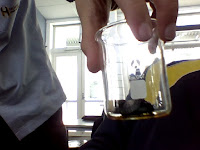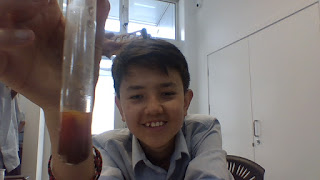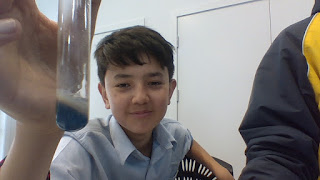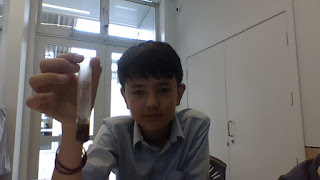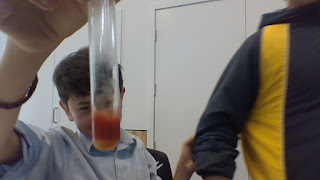Today we are going to do a protein test After we did testing the protein we are going to write it on our blog and share it with other people who will see my blog,
Aim: To test if a sample of food contains protein.
Hypothesis:
I think potatoes are going to be negative protein.
I think Apple is going to be negative for protein.
I think milk is going to be positive for protein.
I think the egg is going to be positive for protein.
I think bread is going to be negative for protein.
I think the sugar is going to be negative for protein.
Equipment: Test tube, sodium hydroxide (NaOH), copper sulfate (CuSO), food sample.
Method:
1. Place about 2 ml of the sample into a test tube and add 5 drops of sodium hydroxide.
2. Add 5 drops of copper sulfate.
3. Shake the test tube gently from side to side.
Result:
All of the negative for protein is bread, apple, potatoes, sugar.
All of the positive for protein egg, milk, because of the bread, apple, potatoes, sugars they didn't make of meat.
Conclusion:
We didn't do the experiment because if we do it it will take to long, our science teacher does the experiment show us every experiment she did like apple, potatoes, milk, egg, sugars, bread and us we can see there is more negative for a protein that positive.
Discussion:
The bread is negative for protein because the bread didn't make for meat it's just a bread that u can eat.
The milk is positive for protein because the milk is from a cow.
The egg is positive for protein because the egg is for the chicken when they lay an egg.
The apple is negative for protein its grow up so lots of people can eat it because it's healthy.
The sugar is negative for protein because its made of the machine.
The potatoes are negative for protein because it's just same the apple they put the seeds on the mud then it will grow and grow fruits.
